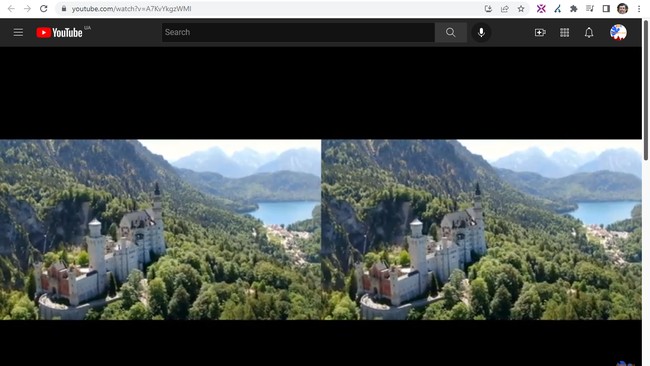
For more than three years I thought about how to get 3D videos from a drone or drones without excessive complexity and high cost. Less than six months ago, I succeeded (https://syla.top/by-angels-eyes/) to tackle the problem and I applied for an international patent and made about fifty test videos. Without any advertising, the number of views on my YouTube channel reached several hundred a day (see the screenshot of channel analytics below), confirming the resulting spectacle's unusualness and attractiveness.
I suggest Airbus shoot a video using my method during flights and demonstrate it through VR helmets to passengers with the ability to select/switch the audio tracks, port or starboard, explanatory subtitles, etc. Also (for a fee?), I think showing videos of other routes and/or purchasing relevant recordings will be possible for passengers to watch at home. It is not at all necessary to equip every aircraft with cameras, although their presence would allow passengers to switch to a "live" channel in real-time to compare the real picture with a pre-edited one, filmed in close to ideal weather conditions.
See my YouTube channel youtube.com/channel/UCAeExMS_owdwypEgR6bqYFg with red-cyan anaglyphs playlist https://www.youtube.com/playlist?list=PLXTEXbI4sXRL1cwKj7oNUuyfvGX9gjSft for red-blue glasses and side-by-side cross-view https://www.youtube.com/playlist?list=PLXTEXbI4sXRJMgtftsUDQxNykovhMBJkL for VR glasses or helmets.
The user simply selects the appropriate item in the menu of their virtual reality. For example - "3D porthole on the left" or "3D porthole on the right", or "Look at the earth "by angel's eyes" "(who is a kilometer tall :)"
The proposed solution offers passengers literally never-before-seen "transformed reality" scenes, giving depth to normally flat high-flying aircraft window views. Most passengers flying "windowless" will feel less left out - especially children.
As noted above, it will certainly open up new business opportunities, in the various kinds of 3D virtual reality content sales generated during the flights.
Simply compare "dead" 3D "video" which in reality is just a big photo moving under the camera with those from my channel - with tiny people and cars moving... Nothing to tell about the cost.
As far as I know, flight shooting videos (in general, with few exceptions) are not a problem now. To the moment I used different freeware soft and drone videos available on YouTube (after asking authors about their possible objections) for my experiments. I am a retired physics associate professor, not a programmer. So any VR professional will easily implement the method to, for example, real-time 3D streaming from the onboard camera(s).